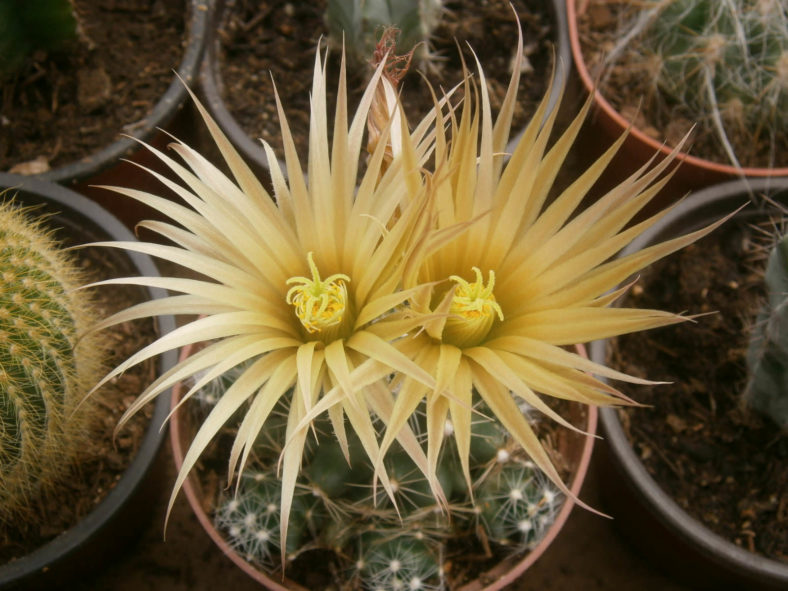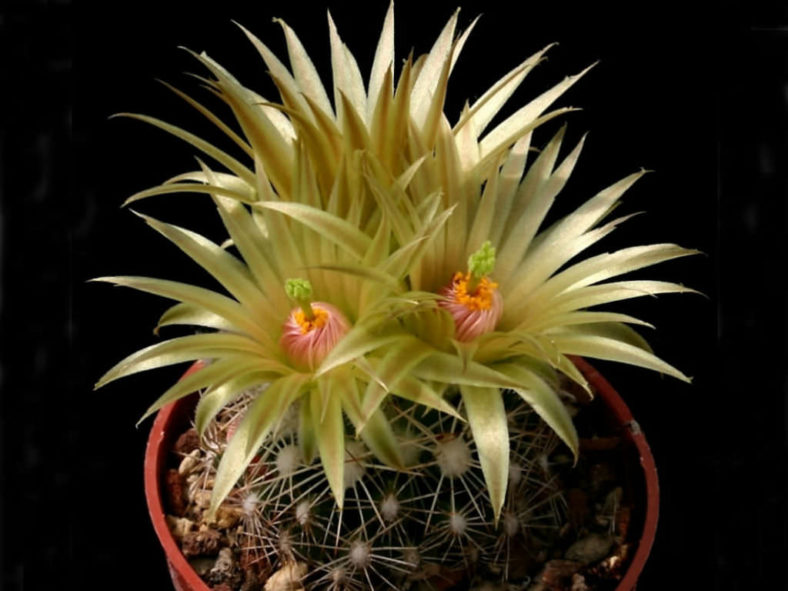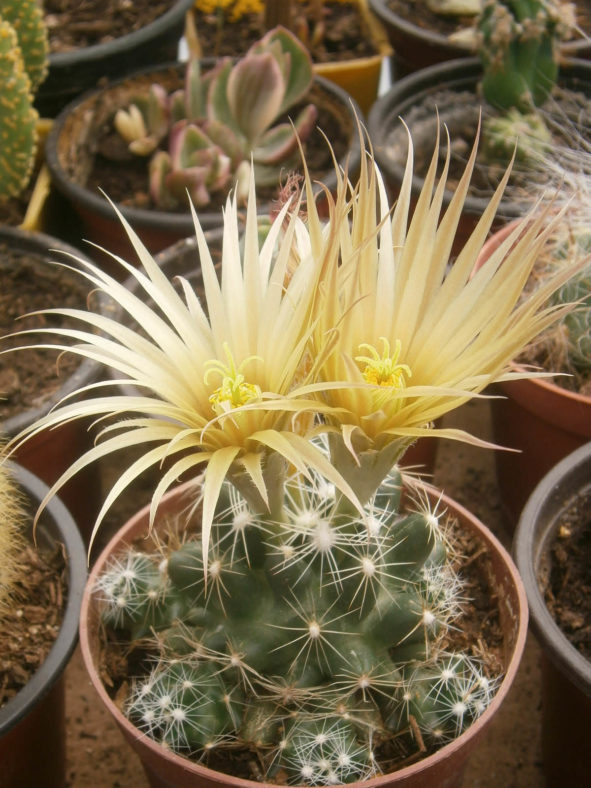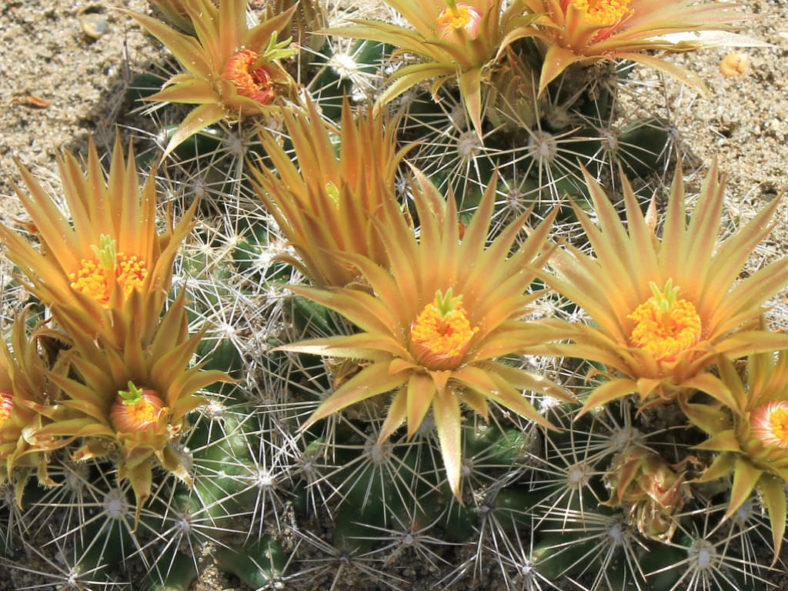Scientific Name
Pelecyphora missouriensis (Sweet) D.Aquino & Dan.Sánchez (Missouri Foxtail Cactus)
Common Name(s)
Missouri Foxtail Cactus, Yellow Pincushion Cactus, Plains Nipple Cactus
Synonym(s)
Cactus missouriensis, Coryphantha missouriensis, Escobaria missouriensis, Mammillaria missouriensis, Neobesseya missouriensis, Neomammillaria missouriensis
Scientific Classification
Family: Cactaceae
Subfamily: Cactoideae
Tribe: Cacteae
Genus: Escobaria
Etymology
The specific epithet "missouriensis" (pronounced "miss-oor-ee-EN-sis") means "of or from Missouri" and refers to the occurrence of this species along the Missouri River.
Origin
Pelecyphora missouriensis is native to the United States and Mexico.
Description
Pelecyphora missouriensis, formerly known as Escobaria missouriensis, is a small cactus with stems that can be flattened, spherical, or inverted cone-shaped. It can grow either solitary or in clumps. The stems have elongate tubercles tipped with spine-bearing areoles with short, white wool not obscuring the basal portion of the spines. They are deep-seated in the soil, becoming flat-topped and nearly subterranean in winter. The stems can reach a height of 4 inches (10 cm) and a diameter of 3.2 inches (8 cm). Each areole bears 0 to 2 central spines and 10 to 20 radial ones. The spines can measure up to 0.8 inches (2 cm) long and vary in color from bright white, pale gray, or pale tan, weathering to gray or yellowish brown, dark brownish orange to pale brown or pale grayish pink tips present on all or only the largest.
The flowers are pale greenish yellow to yellow-green with mid-stripes of green or rose-pink to pale brown. They can reach a length of 2 inches (5 cm) and nearly equal diameter, and appear from late spring to early summer near the tip of the stems. The fruits are orange-red to scarlet, sometimes proximally carmine or nearly magenta. They are spherical to ellipsoid, and can grow up to 0.4 inches (1 cm) long in diameter. They contain tiny, black seeds.

Hardiness
USDA hardiness zone 7a to 11b: from 0°F (-17.8°C) to 50°F (10°C).
How to Grow and Care
Escobarias are susceptible to rot and require well-drained soil without excess water or stagnation. It has been observed that the plants also suffer from the environmental humidity, which should preferably remain very low (30% to 50%). Avoid watering during the winter, when the plant is dormant. Watering Escobaria in cold environmental conditions will almost certainly lead to the death of the plant. In the growing season, the plants, whose growth is typically quite slow, perceive a significant temperature difference between night and day. The experienced grower knows well the difficulties of survival of this genus, which is certainly not one of the easiest to grow.
The seed germination rate is lower than that of other genera, and other propagation methods, such as offsets or cuttings, are preferable.
See more at How to Grow and Care for Escobaria.
Links
- Back to genus Escobaria
- Succupedia: Browse succulents by Scientific Name, Common Name, Genus, Family, USDA Hardiness Zone, Origin, or cacti by Genus
Photo Gallery
Click on a photo to see a larger version.


